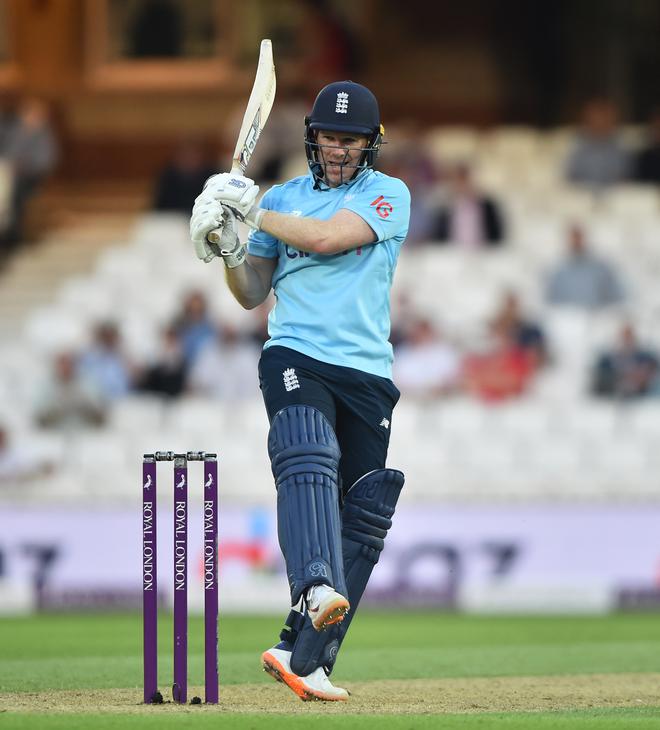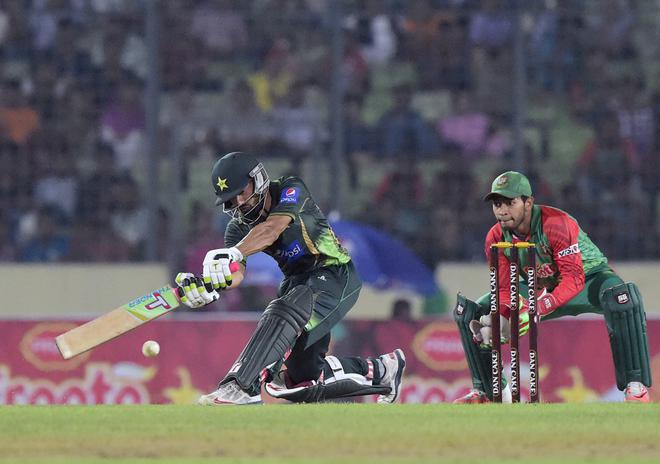

India captain Rohit Sharma recently observed that the No. 4 position in the ODI batting order had been a problem for the team since Yuvraj Singh’s retirement.
If we consider the frequency of appearances, India has had four mainstays at No. 4 in its ODI history: Dilip Vengsarkar in the 1980s, Mohammad Azharuddin in the 1990s, Rahul Dravid in the 2000s, and Yuvraj in the 2010s.
In the 2023 World Cup, India’s No. 4 will most probably be Shreyas Iyer (fitness permitting), to be followed by the wicketkeeper (either K.L. Rahul or Ishan Kishan, depending on whether a right- or a left-hander is preferred), and two all-rounders (Ravindra Jadeja and Hardik Pandya). The reserve middle-order option is Suryakumar Yadav.
A global problem
The problem at No. 4 is not India-specific. For instance, in the 2019 World Cup, England used three different players in the slot, while Australia used four. New Zealand and Bangladesh had the most stable No. 4 bat in the tournament. India’s much publicised problems at No. 4 in that edition were not unprecedented either. It used five different batters at No. 4 in the 2003 World Cup. The nature of the uncertainty surrounding the position, however, did change from 2003 to 2019.
The 2003 World Cup was the last one played before the Powerplay (PP) rules were modified in 2005. In the six-year period, starting from the 1999 World Cup to 2005, 23.4% of deliveries (or, 11.4 of the 50 overs) in ODIs were delivered by a player who batted in the top six. Since the PP rules were last modified in 2015, only 6.5 of the 50 overs are being delivered by a top-six batter.
In October 2012, the ICC decided to experiment with a new restriction, which allowed at most four fielders outside the circle during non-PP overs, a reduction from five. This made it increasingly difficult for the part-timer to fill in the fifth bowler’s overs.
Yuvraj averaged between six and seven overs per ODI in 2009, 2010 and 2011, and had a superb all-round Player of the Tournament performance in India’s 2011 World Cup campaign. After the rule change in October 2012, Yuvraj played 29 times for India, in 2013 and 2017, and bowled only 31 overs.
The fielding restrictions were relaxed by the Anil Kumble-led ICC Cricket Committee following the 2015 World Cup, allowing an extra fielder on the boundary for the innings’ last 10 overs, but this did not lead to the return of the part-time bowler.
Absent these changes, which began in 2005, it is easy to see Rohit Sharma, Steven Smith, Joe Root and other top-order batters contributing five or six overs, in the manner Sachin Tendulkar, Mark Waugh and Aravinda de Silva did in the 1990s.
The changing middle overs
A second effect of the fielding restrictions has been on the scoring rates in the middle overs. In the period from 1999 to 2005, 129 runs were scored off the bat (137 by all means), on average, from over 11 to 40 in an ODI. In the period after 2016, this has increased to 155 runs off the bat (161 by all means). Teams lost, on average, 3.9 wickets between over 11 and 40 in the 1999-2005 period. This has increased to 4.1 wickets since 2016.
As the charts show, before the PP era (pre-2005), the middle overs were a period of consolidation for the batting side in which the scoring-rate was sacrificed for a few overs. With five fielders permitted on the boundary, a middle-overs stalemate ensued — the bowling side used up its fourth and fifth bowlers and the batters milked whatever runs were available against defensive fields.
This motivated teams to use a steady accumulator at No. 4. Inzamam-ul-Haq, Mahela Jayawardene, Damien Martyn, Rahul Dravid, Mohammad Yousuf, Jacques Kallis, Michael Bevan, Ramnaresh Sarwan, Roger Twose, Brian Lara and Kumar Sangakkara played this role to perfection in the early 2000s. They scored at between 70 and 80 runs per 100 balls faced, and were highly consistent.
Since 2016, the new No. 4 role has perhaps been best embodied by Eoin Morgan for England. The top No. 4s in this period score at better than 85 runs per 100 balls faced, and the best score at a run a ball. They also perform a secondary role — most commonly that of the wicketkeeper. Mohammad Rizwan, Mushfiqur Rahim, Shai Hope, Jos Buttler, Dinesh Chandimal and Rahul have all kept wicket and batted at four.
It is not so much that India has struggled to find a No. 4 to replace Yuvraj, as Rohit put it. Rather, the rule changes in 2015 have eliminated the classic No. 4 we have known for much of ODI history. The PP rules have eliminated the middle-overs stalemate and forced teams to seek new efficiencies with bat and ball. Fluid middle-orders made up of a combination of bowling all-rounders, keeper-batters, and power-hitters are now the norm. India has pursued a similar strategy with its selection.
The significance of match-ups
One final aspect of this fluid middle-order is worth the reader’s attention. The elimination of the stalemate makes favourable match-ups significantly more beneficial. For example, it is advantageous for a side to have a mixture of left- and right-handers in the middle order, just as it is advantageous for a bowling side to have bowlers who spin the ball away from both.
India’s pursuit of Ishan as a left-handed middle-order option should be seen in the light of the side recently losing almost all its left-handed batting. Rishabh Pant was injured in a terrible car accident, and Shikhar Dhawan has made way at age 37 for the phenomenal Shubman Gill.
The ODI game has changed because its rules have changed. The best teams have pursued the most efficient approaches for exploiting the opportunities offered by the new rules. India has been no exception in this regard. Its middle-order, from four to seven, is likely to consist of the wicketkeeper, two bowlers, and a batter. All these players can score quickly, and the bowlers among them are far better than the part-timers from the early 2000s.
It is not so much that India has struggled to replace Yuvraj. Rather, it has been a question of finding the correct type of players to compete under the contemporary ODI rules.







